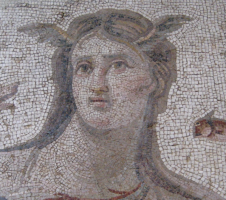User documentation
- Introductory videos are available on the videos page.
- Tutorials and reference manuals.
Note that when Tethys is installed, these tutorials and reference manuals can be accessed from the Web Client which is accessible from the web client. For example, if your server is at http://your.server.gov:9779/Client, you can access documentation from the Tethys menu at the top right of the display.. Update the web address appropriately for your server name as well as the port number if it has been changed from the default 9779 port. Use https:// if you are running the Tethys server with encryption enabled) pull-down menu in the top right of the display.
Understanding how we represent data
- Roch et al. (2016), Management of acoustic metadata for bioacoustics lays out many of the guiding principles of the data that we retain.
- Our standards work has a narrative explanation of our data, explaining what we retain and why. Note that the standard is evolving and may differ from what is in the current distribution.
Tethys XML schemata are used as a concrete implementation of our data ontology. It is assumed that serious users of the database will spend sometime becoming familar with the Tethys data model. An introduction to understanding schemata in general is available in the Tethys user manual. In addition, the draft standards documents contain a scenario section that explains how data are represented generally, without considering the specifics of an XML representation.
Tethys stores data in a native XML database. In general, users of Tethys do not need to learn languages to query XML databases, and the client programs extract most of the details away from the user.
For people who with a deeper understanding of XQuery, XPath, and XML Schemata, we suggest consulting the following texts:
- for XML Schema: Walmsley, P. (2002). Definitive XML Schema. Upper Saddle River, NJ: Prentice Hall PTR.
- for XQuery and XPath: Walmsley, P. (2006). XQuery. Farnham, UK: O’Reilly
Schemat are stored in the database directories: database-name/lib/schema/*.xsd and are best viewed with a schema viewer such as OxygenXML. A less interactive version of the schemata can be viewed here.
Technical documents for developers
- Nilus – Support for generating Tethys compatible output from detection, classification, and localization algorithms. Many users will not need to use Nilus. If your data can be mapped in a relatively straight-forward manner from your fields to Tethys, consider the data source map creation tool in the web client. For more complicated workflows, Nilus lets users control every aspect of creating Tethys-compliant XML that can be directly submitted to the database. The Nilus manual is written for algorithm developers that wish to develop Tethys ready output as opposed to using Tethys’s import interface. In addition to the manual, application programming interface documents are available.
- Encrypted data transmission – Tethys can serve data over secure socket layer, a data transport method commonly used in web commerce such as banking. Using Tethys requires obtaining a certificate and public/private key pair, this document explains how to configure Tethys to use certificate based authentication and encryption.
- The RESTful web services document describes the protocol for client programs to communicate with Tethys web servers.
